Dystopian Dioramas
Looking at one of photographer Lori Nix’s pictures, something feels amiss long before you realize that the lifelike objects she portrays—bar stools, fountains, books, plants—are handmade and impossibly tiny.

Interview by Nozlee Samadzadeh
To give us a sense of scale, how big (or small) are the subjects of your photographs?
My dioramas range in size from small, such as Beauty Shop, which is approximately 18 inches wide by 33 inches deep by 15 inches high, to very large, such as Mall, which is big enough to sit inside.
There is usually one object that determines the size and scale of a diorama. For the Beauty Shop, it was scaled to “dollhouse” scale, which is 1:12, meaning 12 inches becomes an inch. My friend and fellow artist Dan constructed the chairs and hair dryers to match this scale. Mall, on the other hand, was scaled to match the size of the two escalators that were built over a year ago. I’m comfortable working both large and small. Continue reading ↓
“Lori Nix: New York” is on view at ClampArt Gallery, Nov. 4 to Dec. 18, 2010. All images courtesy the artist, all rights reserved.
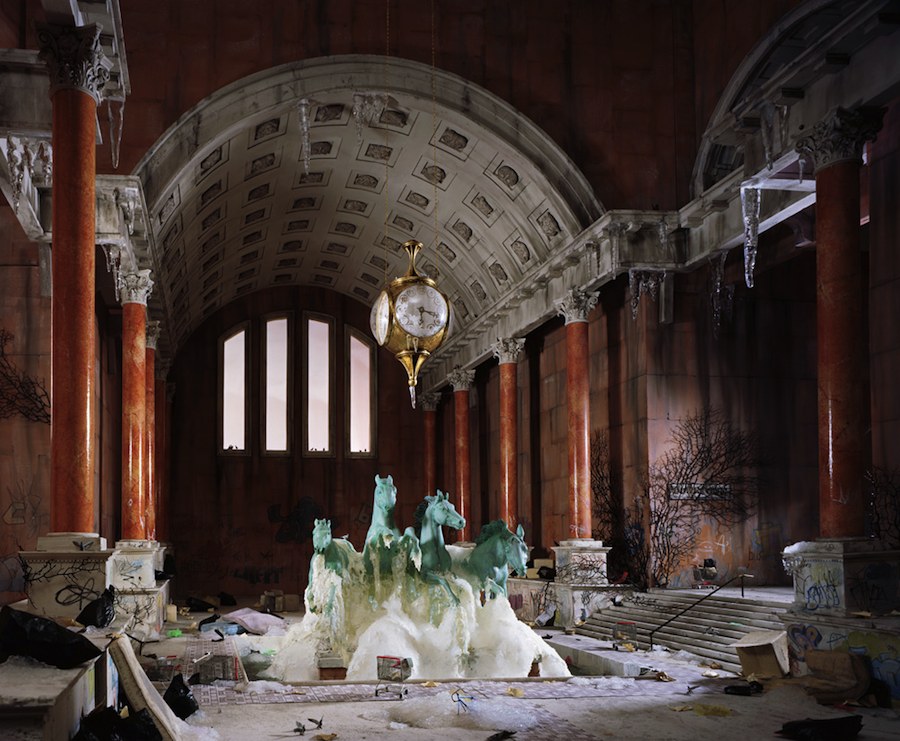
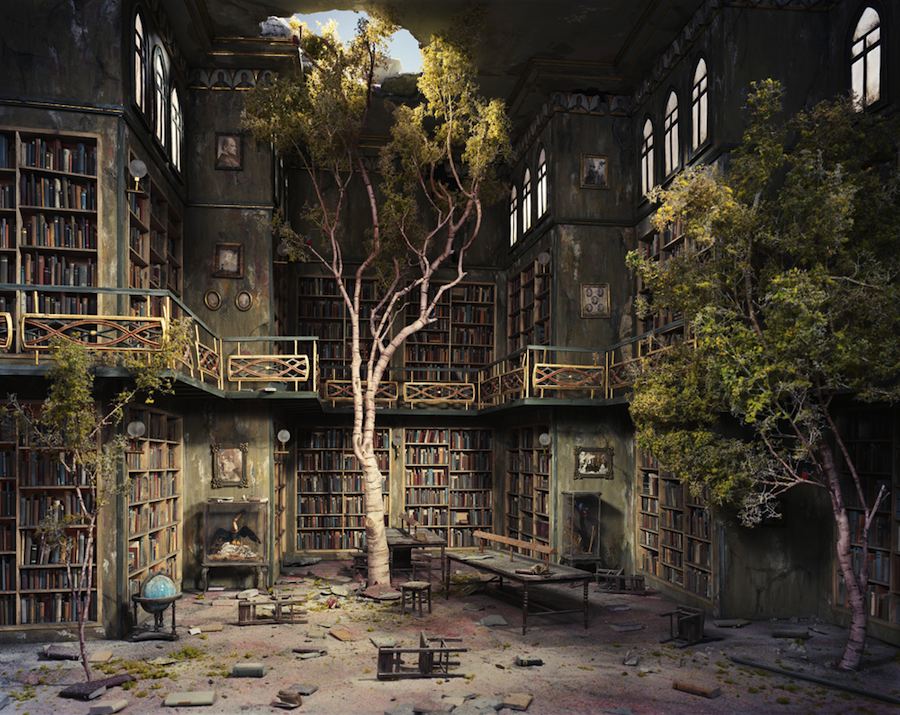
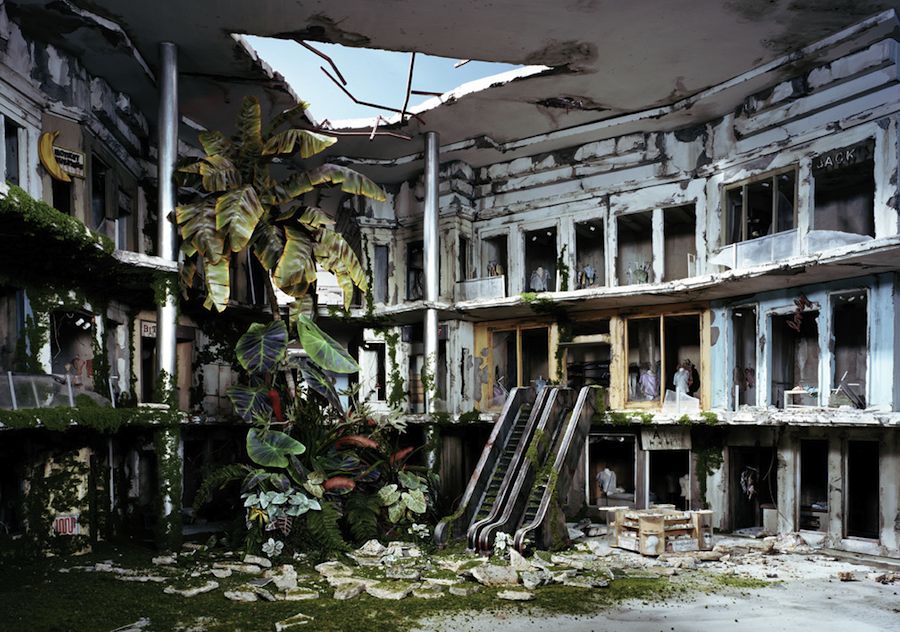
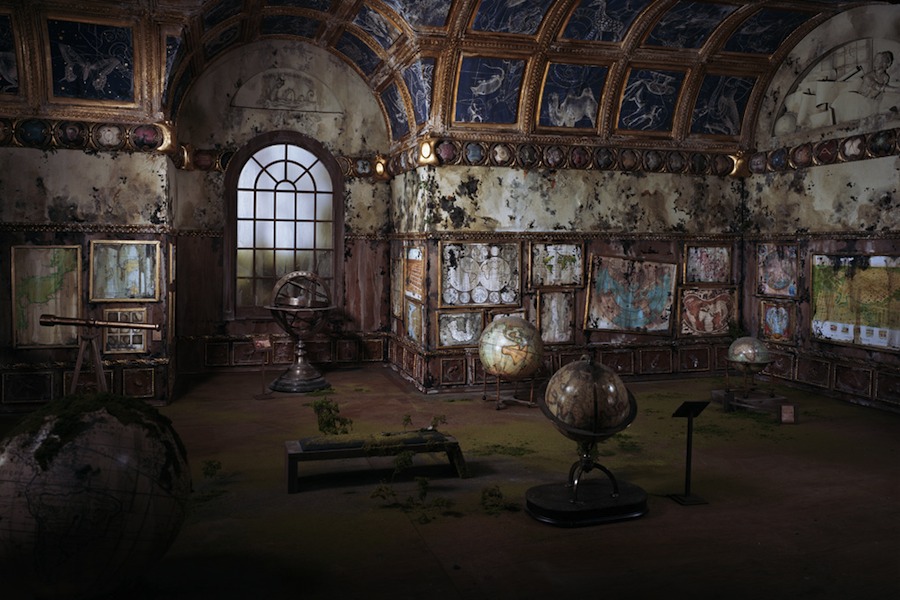
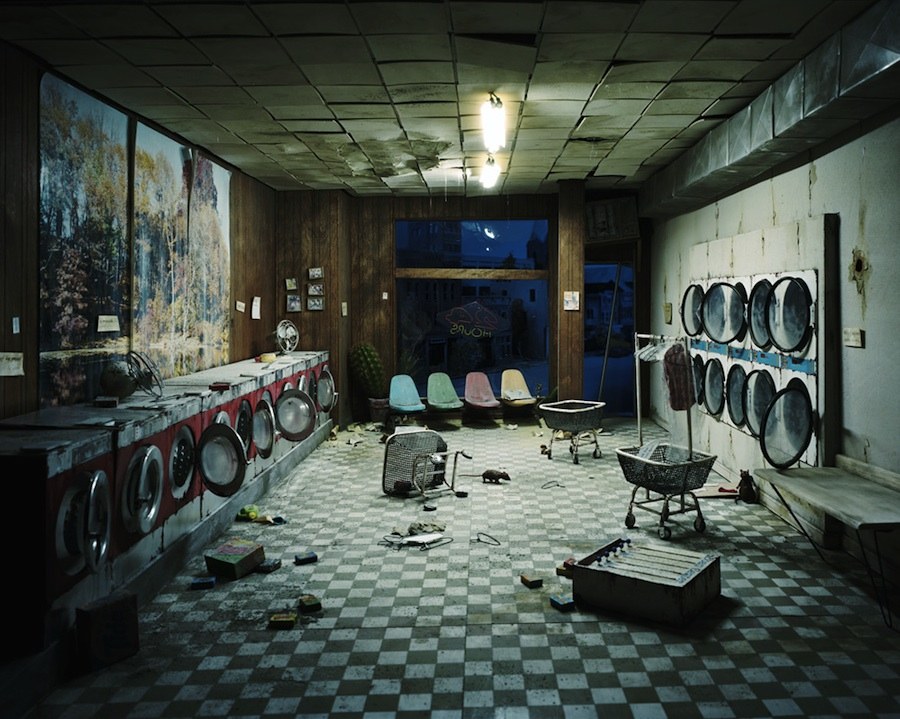
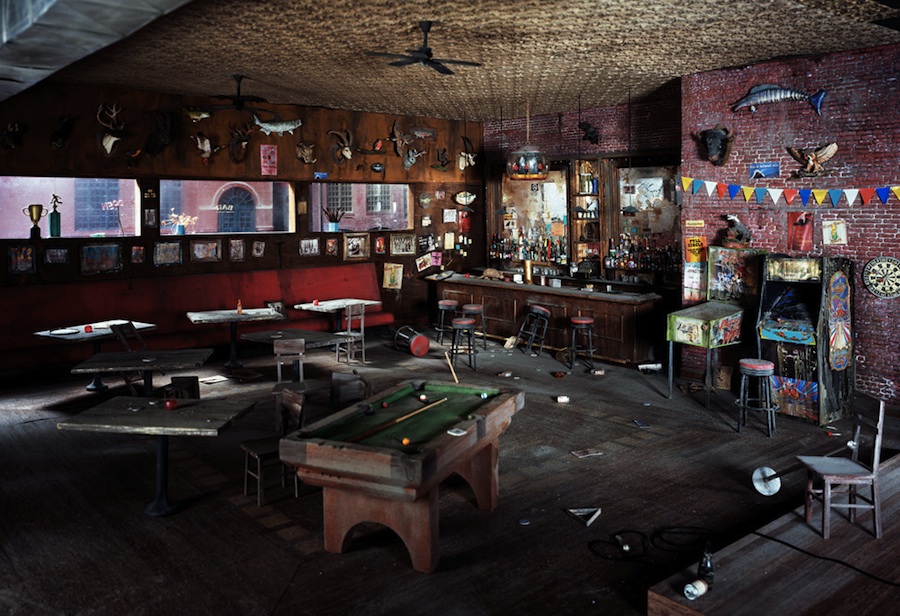
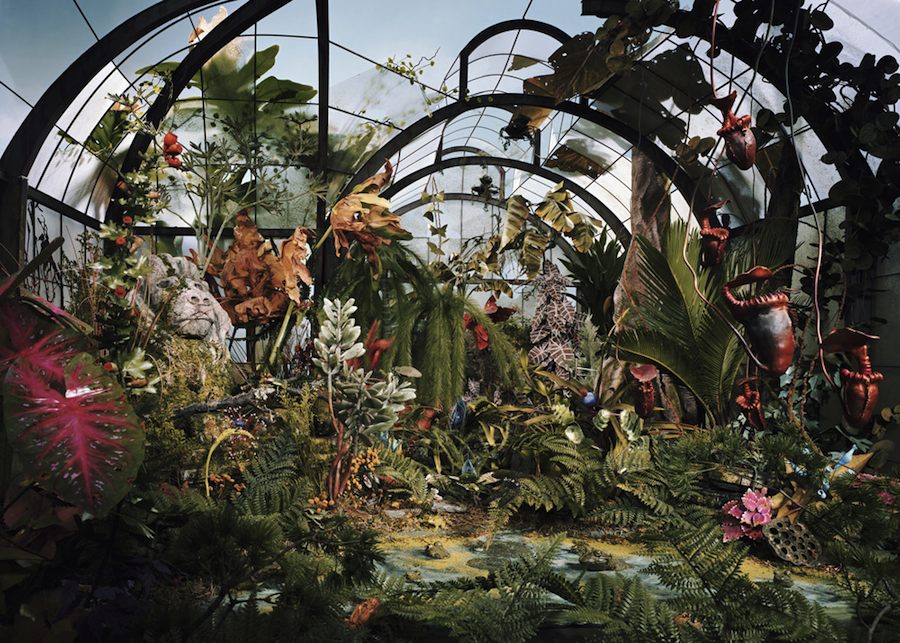
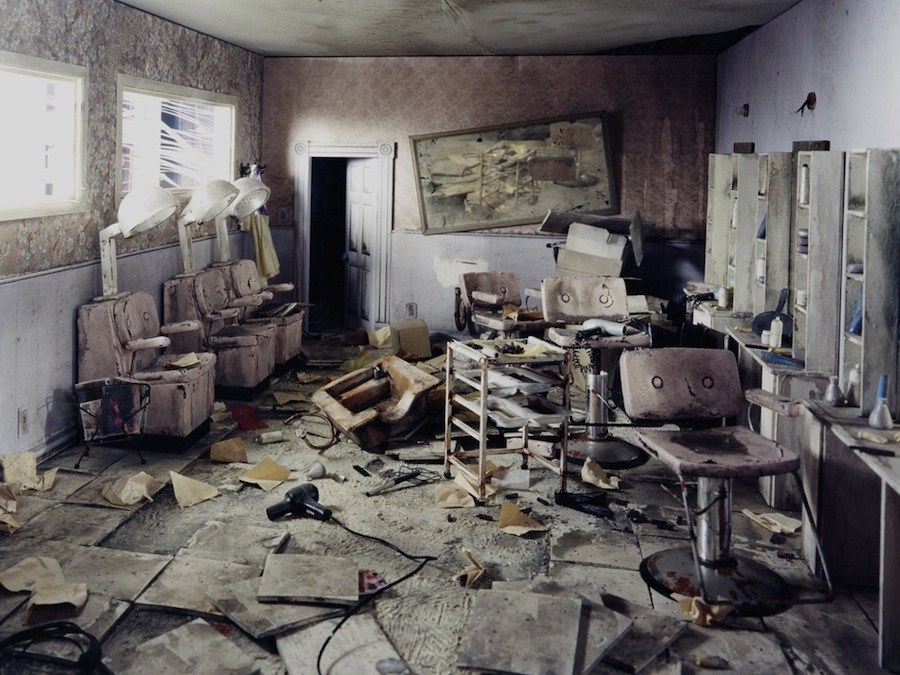
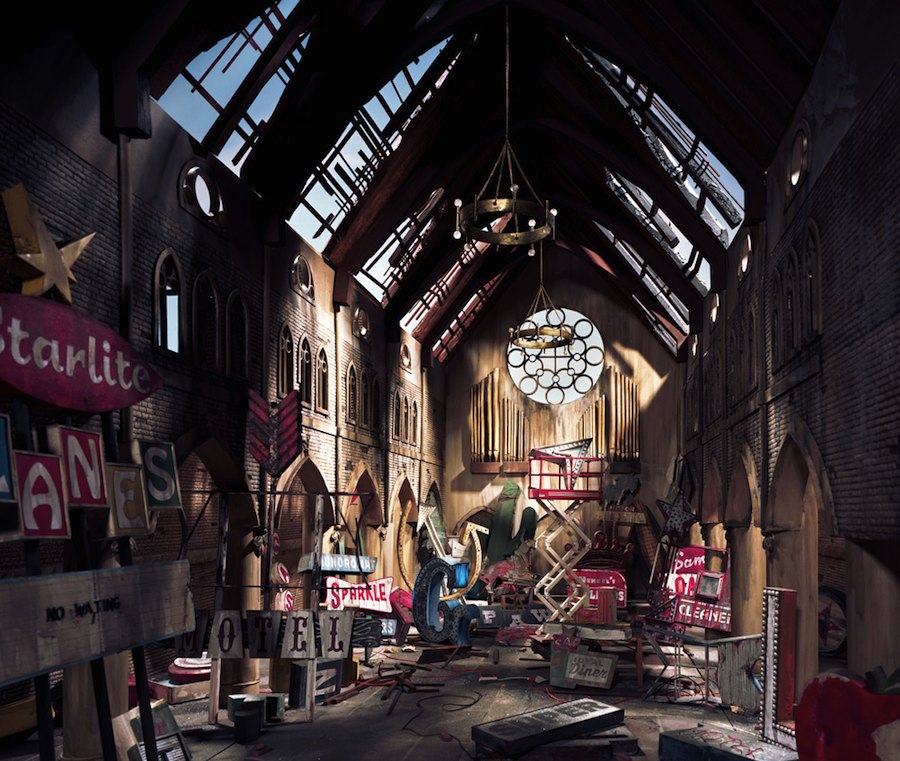
Interview continued
What materials did you use? How did you achieve the neglected look of the objects in your images?
I use all kinds of materials to fabricate these dioramas. My favorite material is extruded foam sheets that can be found at the local hardware store. This material is manufactured as insulation panels for new home construction. The material is light and easy to cut, sand, sculpt, and shape. I also use a lot of cardboard, paper, latex house paint, basswood, and found materials. The neglected look comes from layers upon layers of washes, dust, and debris.
Describe a photo shoot. Where do these sets exist now?
I work with an assistant, Kathleen, around the clock. We build these sets throughout my Brooklyn apartment. The living room is where we stage the large work, but sets have been built in the office, the spray/equipment room, even the kitchen table. The apartment looks more like a garage than a proper living space. We have parts of sets strewn across the place. We try to work on two, sometimes three scenes at a time. When a diorama is finished, I start setting up my studio strobes on light stands, and situate a large-format camera in front of the scene. Because space gets limited, it’s like a minefield of stands and cords and extension cords. I’m constantly tripping over everything. It can take up to two weeks to shoot a final image. Every night I’ll tweak the scene a little bit, usually modifying my lights until I like what I see. I really sculpt the lighting with spots and gobos (another type of light modifier). When I’m done photographing a scene, I let it hang around for a few weeks to a month, then get tired of looking at it and tear it down and recycle what I can, and throw the rest away. I’m not sentimental about my sets at all. When I break something down, it means I’m ready to begin building the next scene.
Do you consider yourself a sculptor or a photographer?
In undergrad, I studied both ceramics and photography. I’m very comfortable working with my hands and working three-dimensionally, yet I consider myself a photographer. My assistant considers herself a sculptor.
How did the city series start? Why have these locations been abandoned?
I started constructing landscapes based on my childhood growing up in Kansas. I’ve always used my surroundings as references for my work. I really just see my work as a mirror of my surroundings. In 2005, I decided to move from landscapes to architectural interiors. The first six years of my life living in Brooklyn finally caught up with me. I love the city for all its architectural offerings. I love the grandiose spaces of Broadway theaters and the endless marble and limestone of the art and science museums. I even love the cramped bodegas and neighborhood grocery stores.
I’m a product of the 1970s’ dystopian cinema. I remember being five, six, even nine years old and seeing movies such as Towering Inferno, Planet of the Apes, Earthquake, and Logan’s Run. These movies have had a great impact on me and my sensibilities. These days I walk through New York and imagine what it would look like, what it would feel like to be alone in an abandoned city. This series is a post-human look at our surroundings. Something catastrophic has happened and man has been wiped from the face of the earth. What remains are our buildings and other artifacts. Art museums, Broadway theaters, laundromats, and bars no longer function. The walls are deteriorating, the ceilings are falling in, the structures barely stand, and yet Mother Nature is slowly taking them over. These spaces are filled with flora, fauna, and insects, reclaiming what was theirs before man’s encroachment.
What do we have to learn from these deteriorating consumerist spaces?
If we do not modify our way of life soon, then I’m afraid no amount of science can get us out of our environmental predicament. Alternatively, we can hide our head in the sand, ignoring what the future is quickly throwing at us. I am afraid of what the future holds if we do not alter our ways regarding the climate, but at the same time I am fascinated by what a changing world can bring.
What are you working on now?
The current show at ClampArt Gallery is part two of a three-part exploration of the city series. I exhibited part one in 2007. The dioramas take a long time to build. Sometimes, if I’m lucky, it will take as little as a month, but on average it takes anywhere from seven months to a year and a half. Therefore, I make about three images a year. This series is a decade-long project. I should be ready for my next gallery show in three years and I hope to finish the entire series in 2015.
